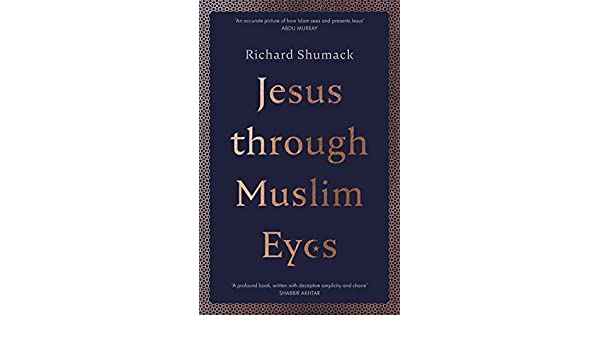Jesus Through Muslim Eyes
by Richard Shumack (SPCK, £12.99)
The other day, before I started on Jesus Through Muslim Eyes, I read in a 1957 book of travels through North Africa from Tunis to Cairo that in Beja, a remote village near the Libyan-Tunisian border, the mosque was dedicated to Jesus Christ.
It surprised the author (the late Richard Carrington) and it surprised me.
Yet how well it illustrates the gulf of culture and comprehension that lies between Islam and Christianity, for it is impossible to imagine that a church anywhere would ever be dedicated in the name of God to the name of Prophet Mohammed.
To fully understand what Muslims believe about Jesus, a writer needs to be clear about what Christians believe about the person and nature of Jesus – as the history of Christianity only too clearly reveals that has often been a conflicted matter, and still is.
Academic
Dr Shumack is an Australian academic who is the director of a centre for the Study of Islam in Sydney Australia, and a well-known writer, teacher and media contributor.
His approach promises much, for he begins with a section of chapters on the theme of getting to know the Muslim Jesus in which he discusses how much was known of Jesus in Arabia in the later 6th and early 7th Century (I add these dates to aid the reader, for the book is chary of dates, making it often difficult to known to what historical period the author’s comments relate).
Jesus, of course appears in the Qur’an as the son of Mary, and in Muslim tradition as the “pious servant of God”, the Good Teacher of Sufic mysticism and the Yeshua of the present day Muslim – who may, in fact, know very little of Jesus outside of Islamic teaching.
He finds at the end that Muslims and Chrstians are not on the same roads. But that the true road is the Christian one”
The author says less than is needed for understanding on the career of the Prophet as a well-travelled and religiously-minded man, who was in constant contact with Jews and various groups of Christians in the wealthy cities of the ‘Incense Coast’ – what is now the Yemen.
He says, for instance, that the Gospels were only translated into Arabic at a late date; but Hebrew, Syriac and Greek were widely spoken and written in the Middle East.
The position of modern Muslims is that what we know of Jesus, the historical figure and his teachings, was in some way ‘corrupted’ from the purity of an earlier tradition. The author speaks of a ‘conspiracy theory’ but this is bit much. Despite what he says the texts of the Bible and the Gospels have been edited, being derived as they were from earlier oral records.
A second section deals with this process of corruption which in fact tells us more about Christian attitudes than Muslim ones. Indeed through the book he writes as if there were a completely standardised Islam and Christianity.
But as we are aware of in Muslim history, and deeply conscious of in Christianity, people have little difficulty in creating very divergent views from the Bible and the Gospels, and treating them as if they were ‘the real Christianity’.
He then turns to locating Jesus in religious culture, concluding that from what even Islamic teachers say, the Jesus of Islam is in reality the Jesus of Christianity.
He finds at the end that Muslims and Christians are not on the same roads. But that the true road is the Christian one. His argument may perhaps persuade some readers, but one would want to be told a great deal more about the view of Shia and Sunni and indeed Sufis before the true complexity of Islamic thought and teaching can be compared with a basic evangelical Christianity.
Large view
Prof. Sumac has written an interesting book, and one which many will be interested in reading, if only for the opportunity of saying every second page, “well up to a certain point…” But it suggests, however, a large view which he does not allude to.
Christians need perhaps to adopt that larger view to grasp a little more clearly what lies behind other beliefs.


 Peter Costello
Peter Costello
